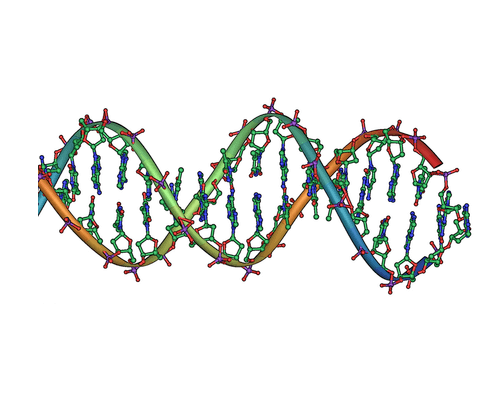DNA, which stands for “Deoxyribo-nucleic-acid”, defines the characteristics of cells, and the organisms they are part of.
Shape of DNA
DNA is made up of two chains, which wrap around each other to form a double-helix. An example of a double-helix is below:

Chromosomes
Chromosomes is a collection of DNA. They can be found in the cell’s nucleus, where all of the genetic data is stored. Chromosomes form in a shape that looks similar to an X.
In each of our cells, there are 23 pairs of chromosomes. There are 2 additional chromosomes that determine your gender: the X and Y chromosomes.
Everyone (whether a boy or girl) starts off with two X chromosomes. If you have two X chromosomes, you are a girl. If you have one X and one Y chromosome, you are a boy.

Genes
Genes is a section of DNA that define what characteristics the organism/cell has. For example, there is one gene that says what your eye colour will be. There is a certain code for blue, another for green and another for brown. Mutated genes cause genetic diseases such as colour blindness and Down’s syndrome.
Chemical makeup
DNA is made up of mostly nucleic acids, along with proteins, lipids and complex carbohydrates.
Not In The Curriculum Box (What is this?)
In recent years, a technology called CRISPR has been developed to edit genes and their values. This has exciting potential: diseases could be cured and aging could be eliminated. But there are some downsides to it too.
All of the potentials and downsides of genetic engineering are explained in this video: